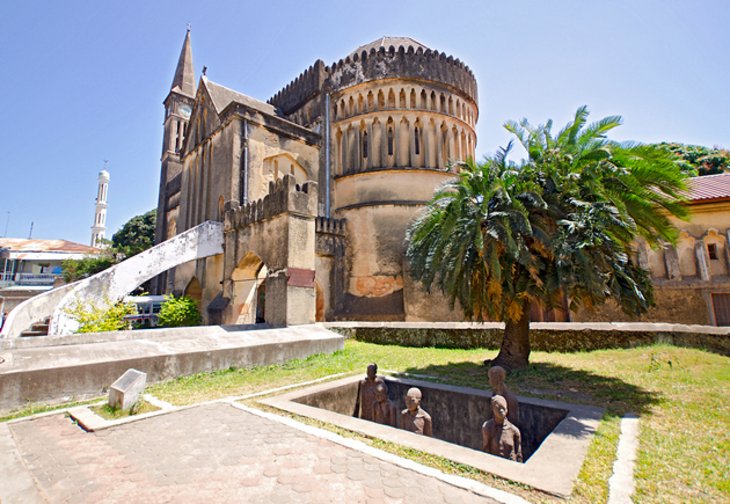Destination - Tanzania
About
Tanzania is home to some of Africa’s most famous national parks and natural attractions, including majestic Mount Kilimanjaro. Consequently, the most popular things to do in Tanzania and the reason many people visit the country, are the safaris and wildlife related adventures. Most visitors will find themselves passing through Dar es Salaam and heading out to the wilderness areas and other destinations. For those who want to spend some time soaking up the sun, the beautiful beaches of Zanzibar beckon.
Quick Facts
Capital: Dodoma
Major languages: English (official), Kiswahili or Swahili (official),
Currency: Tanzanian shilling (TZS)
Area: total: 947,300 sq km
Climate: varies from tropical along coast to temperate in highlands
Population: 57.31 million (2017)
Mount Kilimanjaro
Mount Kilimanjaro is Africa’s highest peak (5,895 m) and Tanzania’s most iconic image. Mount Kilimanjaro National Park, unlike other parks in northern Tanzania, is not visited for the wildlife but for the chance to stand in awe of this beautiful snow-capped mountain and, for many, to climb to the summit. Mount Kilimanjaro can be climbed at any time, although the best period is from late June to October, during the dry season.
Kilimanjaro, a World Heritage Site, was formed over 1 million years ago by volcanic movement along the Rift Valley. Three volcanic cones – Shira, Kibo, and Mawenzi – came to be about 750,000 years ago. The highest point is Uhuru Peak on Kibo, which is one of the Seven Summits of the world.
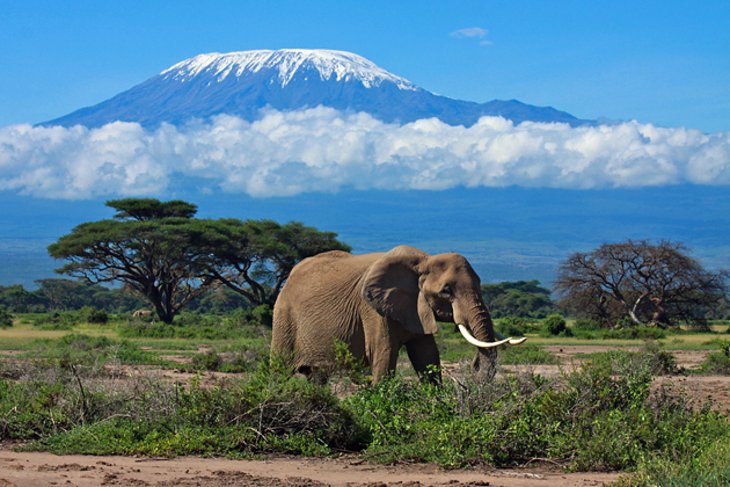
Serengeti National Park
Serengeti National Park is a vast treeless plain with millions of animals living here or passing through in search of fresh grasslands. It’s most famous for the annual wildebeest migration but you can also see the Big Five here, and nearly 500 species of birds have been recorded on the Serengeti. As the second largest national park in Tanzania, the Serengeti attracts tens of thousands of tourists each year. The best months for wildlife viewing in Serengeti National Park are between December and June. The wet season is from March to May, with the coldest period from June to October.
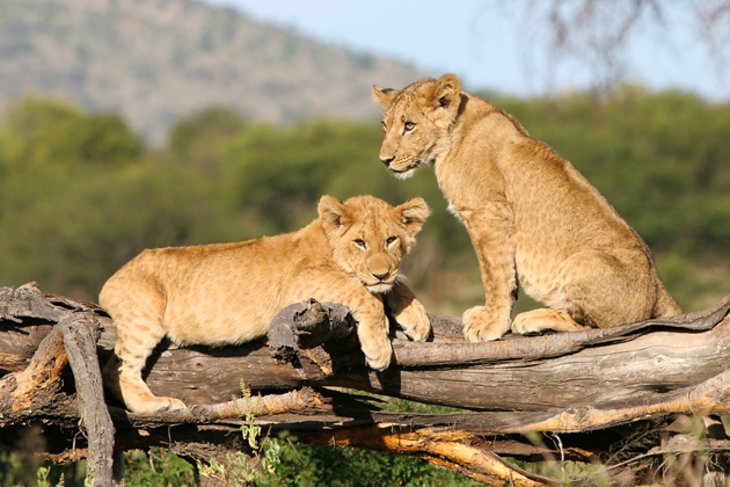
Zanzibar Beaches
The island of Zanzibar, also called Unguja, is a major holiday destination in Tanzania and known for its beautiful beaches. Part of the Zanzibar archipelago, which consists of the islands of Zanzibar and Pemba, this island has some of the best beaches in the world. The surf varies depending on what side of the island you are on, but visitors will find soft white sand and clear shallow water, along with traditional boats lining the shore. The historic city of Stone Town, known for old Arabian townhouses, narrow alleyways, and a busy port, is located in the heart of Zanzibar.
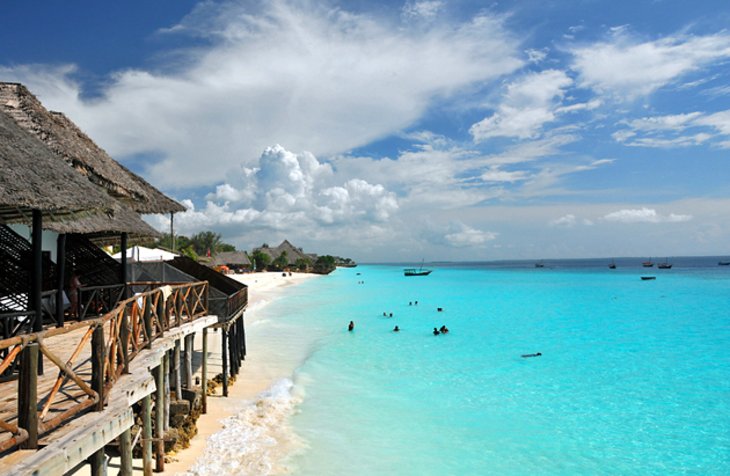
Ngorongoro Conservation Area
Located between the Serengeti and Lake Manyara, the Ngorongoro Conservation Area is home to the famous volcanic Ngorongoro Crater and is one of Tanzania’s most popular wildlife viewing areas. This huge volcanic crater has a permanent supply of water, which draws thousands of animals who stay in this area rather than migrating.
Visitors come here primarily for viewing large animals and bird watching. Thousands of animals can be seen on the crater floor, including lions, elephants, rhinos, Thomson’s gazelles, and buffaloes, but wildebeests and zebras account for over half of the animals that call the Ngorongoro Crater home.
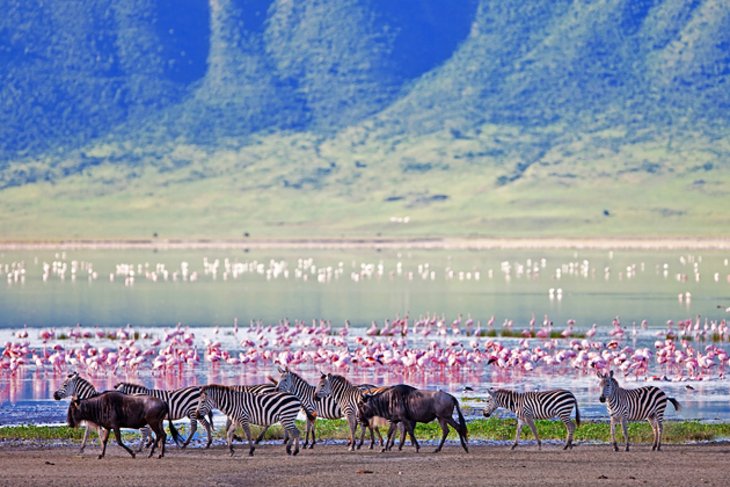
Mafia Island
Mafia Island draws divers and snorkelers from around the world to the undersea world protected by the Mafia Island Marine Park. The best months for diving are October to March but the best weather on Mafia Island is May to October. March and April are months of heavy rain. Mafia Island Marine Park has coral gardens, an abundant variety of fish, and a relaxed diving atmosphere. Countless birds and over 400 species of fish can be seen in the area. Mafia Island is also a traditional breeding site for the green turtle, which are unfortunately endangered.
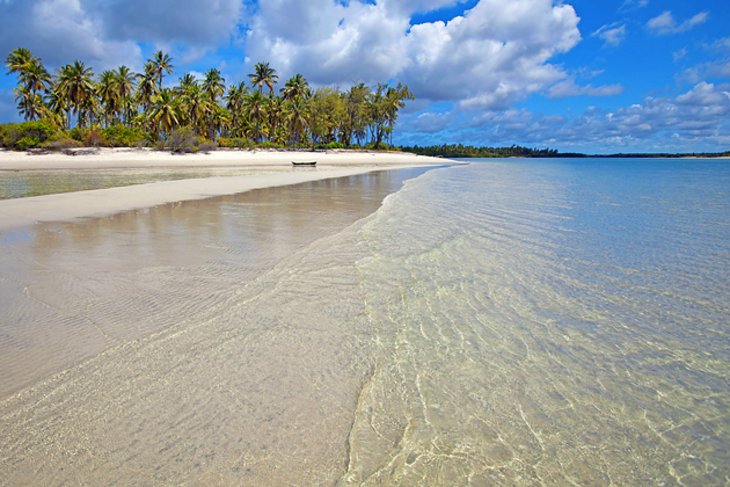
Stone Town
Stone Town is the cultural heart of Zanzibar and little has changed in the last 200 years. The grand old Arabian homes lining the narrow streets and winding alleys give the city its own unique charm. The majority of homes in Stone Town were built in the 19th C when Zanzibar was one of the most important Swahili trading towns in the Indian Ocean. Visitors will notice the bras-studded, intricately carved wooden doors on many of the houses. As the world’s oldest functioning Swahili city, many of the landmarks in Stone Town have been restored to their original glory. Some of the historic buildings are now museums and tourist attractions.
